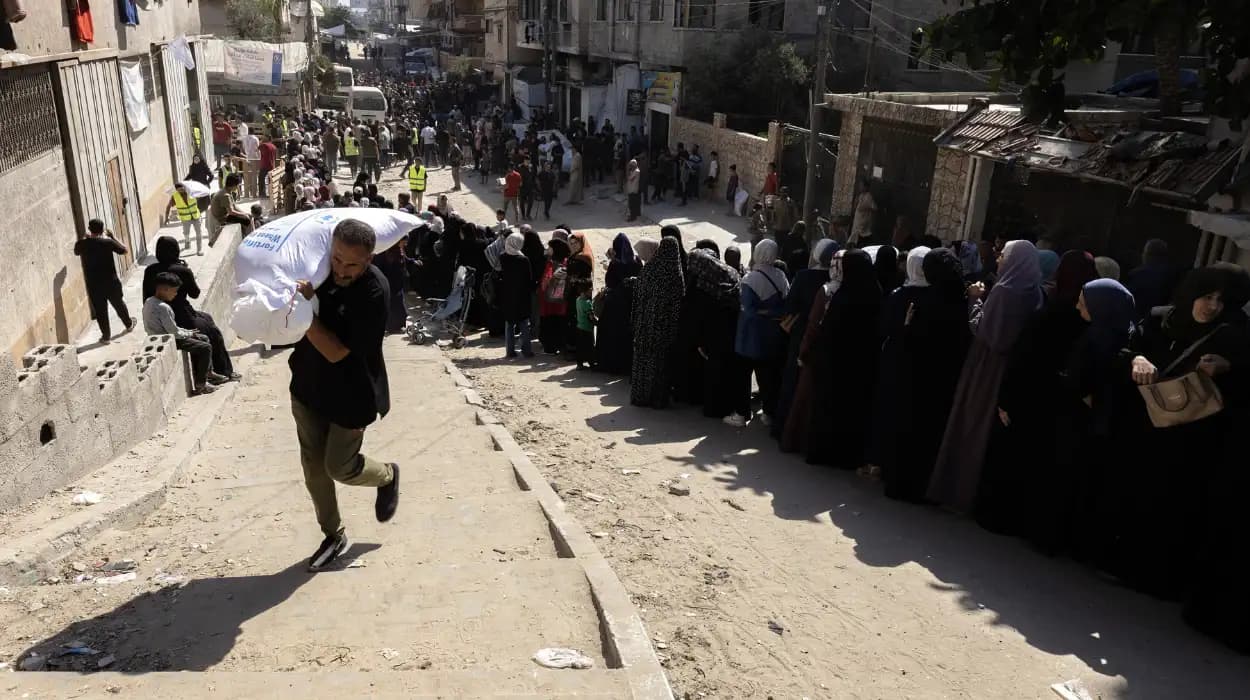Summary
- Gaza aid deliveries below EU-Israel targets.
- 463 trucks offloaded July 29-August 4.
- Fuel deliveries and routes partly reopened.
- Aid hindered by looting and insecurity.
- Humanitarian needs are still far from met.
According to international media, the Commission
and the European External Action Service put up the bimonthly report, which
gives a summary of the state of humanitarian aid in the Gaza Strip amidst the
ongoing conflict between Israel and Hamas, according to Caliber.Az.
According to UN figures cited in the document,
only 188 aid trucks were offloaded at Gaza's crossing points between July 31
and August 4.
That amount is four times less than the 800
trucks that were anticipated over five days as part of an agreement reached by Kaja Kallas,
the head of EU foreign policy. Under the deal, which has not been publicly
specified, around 160 trucks per day were to enter Gaza.
A minimum of 500 to 600 trucks a day are
required, according to a recent UN statement, to stop the enclave's starvation
from getting worse.
Israel disputes the reported delivery numbers.
According to the document, Israeli authorities claim that 737 trucks passed
through the Kerem Shalom and Zikim crossings in the same period. However,
"Israel includes commercial and GHF operations in its daily counting of
trucks," the document states, referring to the Gaza Humanitarian
Foundation, a joint U.S.- and Israeli-backed aid mechanism.
While Israel has denied responsibility for the
deepening humanitarian crisis, blaming the UN for distribution failures and
alleging that Hamas regularly seizes aid, Brussels has previously criticised
Israel over deadly incidents at four GHF-run aid sites.
The European Commission notes that Israel maintains many trucks are
"waiting to be collected by partners for distribution, something that, according to the U.N., is still attributable to a poor security environment and other major impediments."
"What we can say is that despite this partial progress, we are not where we would want to be in terms of the number of trucks being able to make their way to the destination,"
said Commission spokesperson Anna-Kaisa Itkonen at a Brussels press conference.
"We do not have presence there, we rely on information from our partners, notably the UN,"
she added.
Hadja Lahbib, the EU Commissioner for Humanitarian Aid, has stated that she is prepared to visit Gaza.
However, Maciej Popowski, a senior EU civil servant working in humanitarian aid, was denied entry into the country by Israeli authorities last week.
How might the shortfall in aid trucks affect the humanitarian crisis in Gaza?
With only a fraction of the needed aid trucks
getting through (often less than 20% of daily pre-conflict needs), over half a
million people face starvation, and malnutrition—especially acute among
children—is widespread. Agencies warn of thousands of potential deaths from
hunger if aid does not increase quickly.
Fuel shortages, linked to inadequate aid
deliveries, are causing hospitals and health facilities to fail, with
maternity, neonatal, intensive care units, and ambulances becoming
non-functional. This worsens health outcomes and complicates emergency medical
care.
Even when aid arrives, distribution inside Gaza
is hampered by security concerns, damaged infrastructure, lack of storage
facilities, and looting, further reducing the effectiveness of the limited aid.
